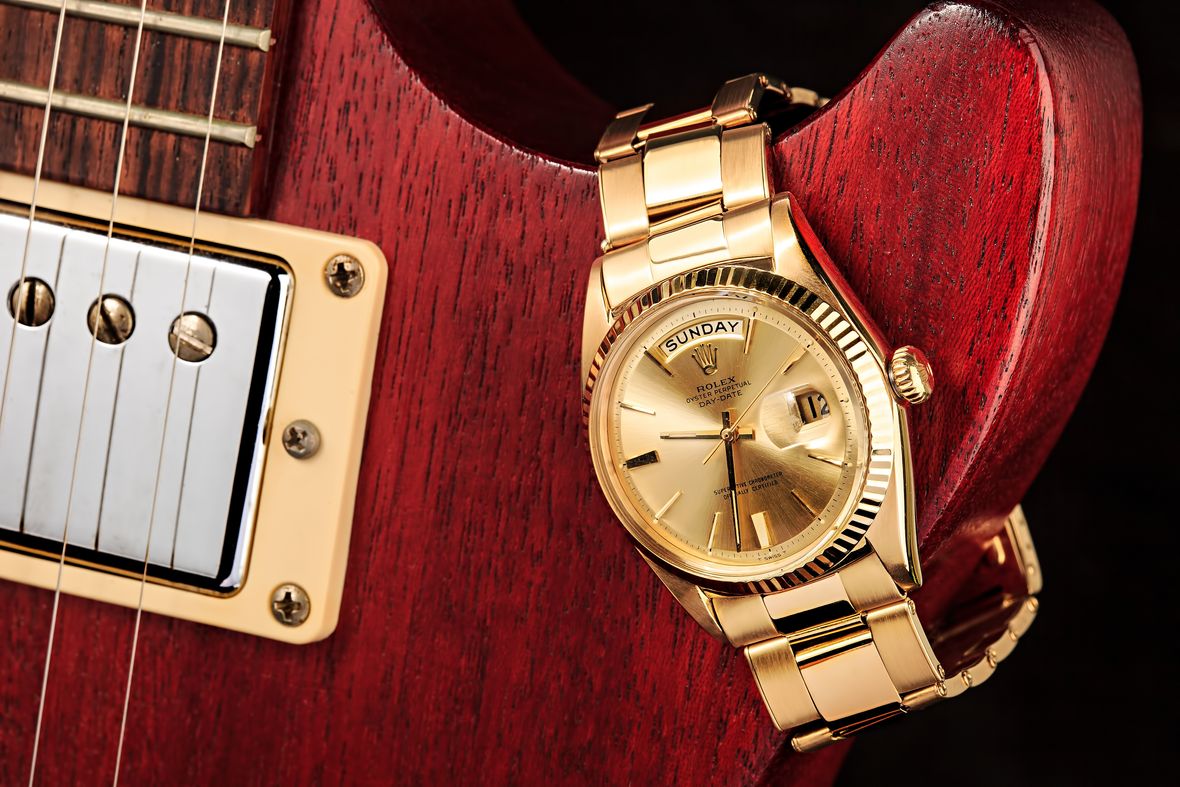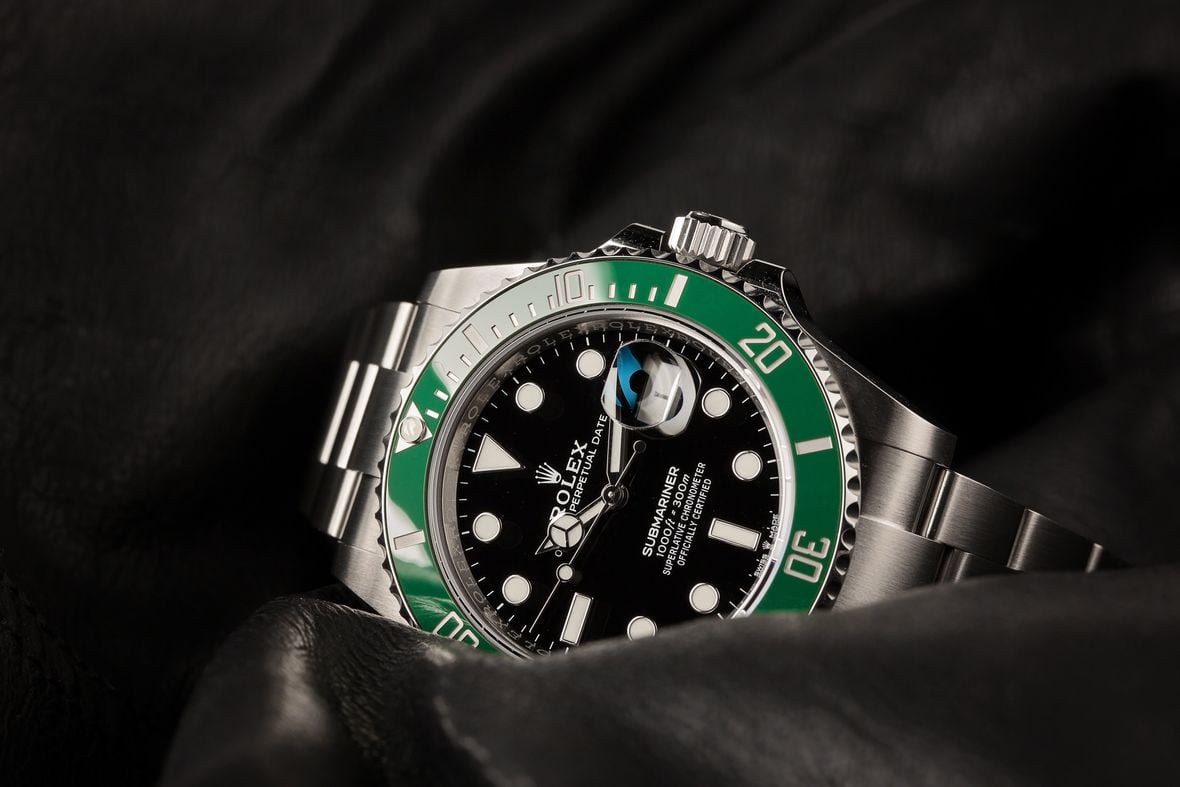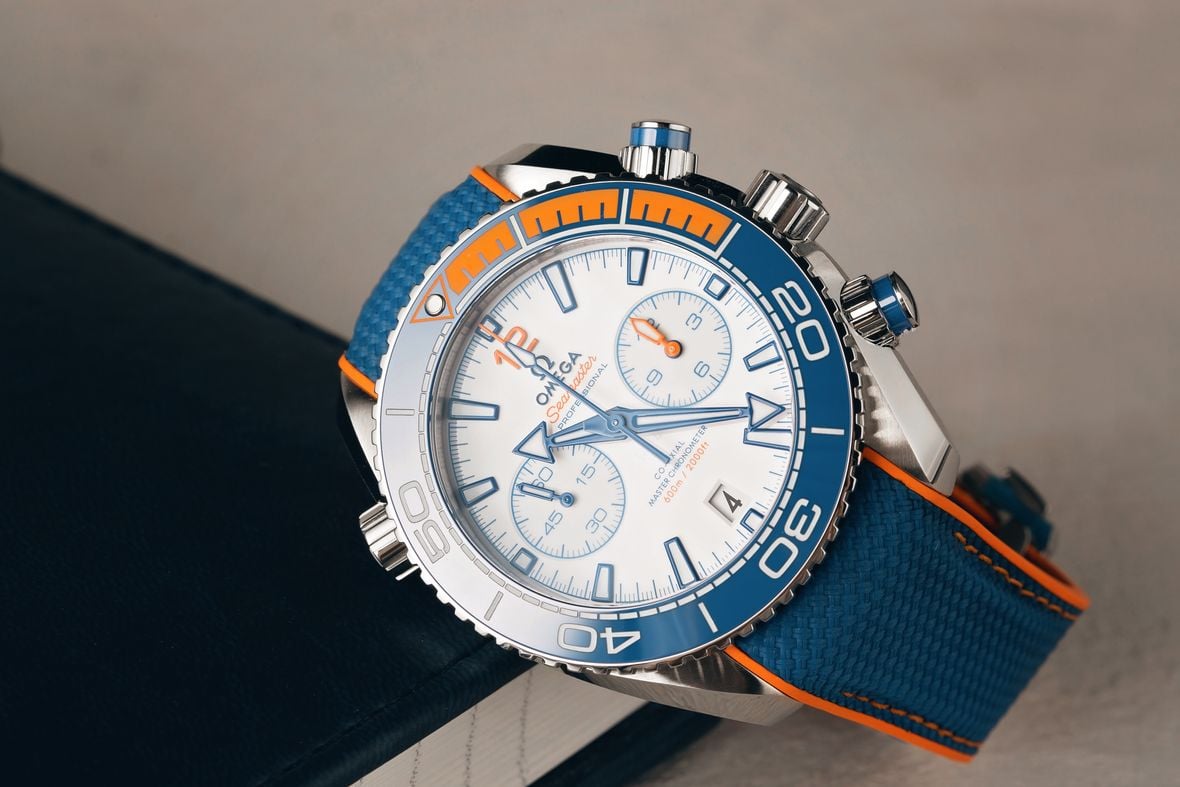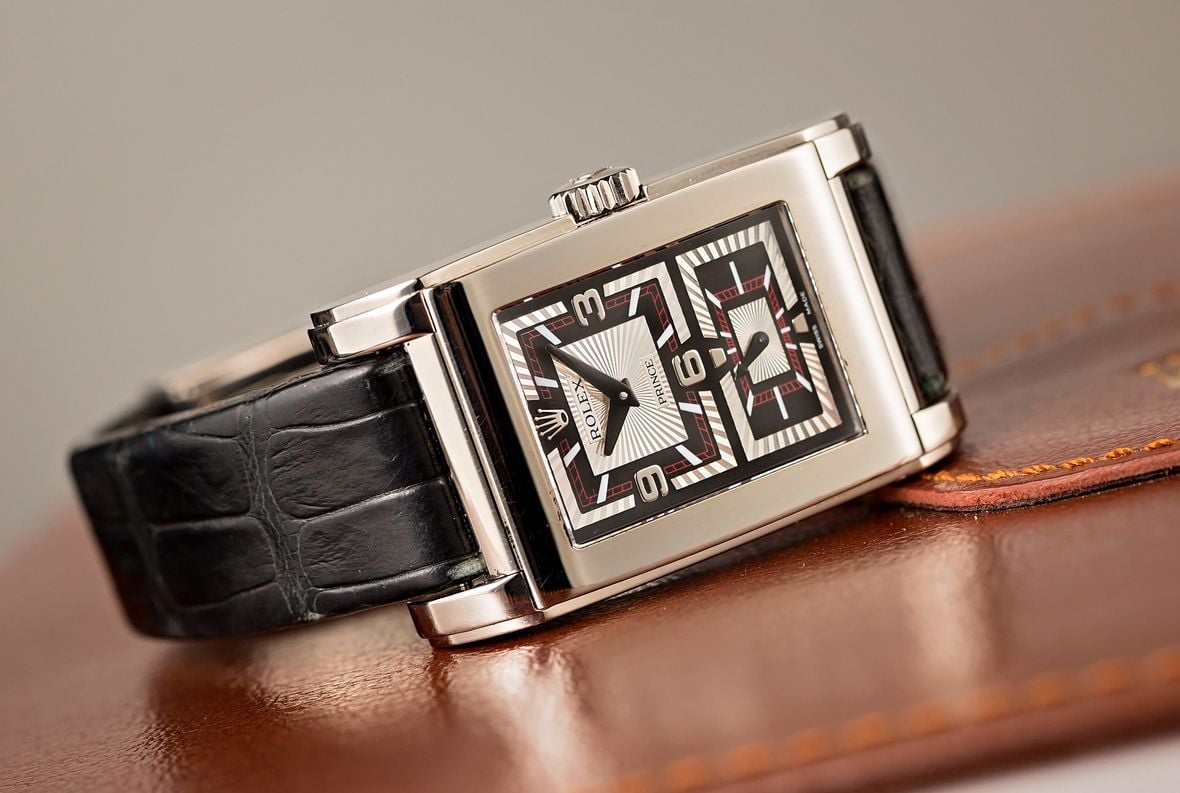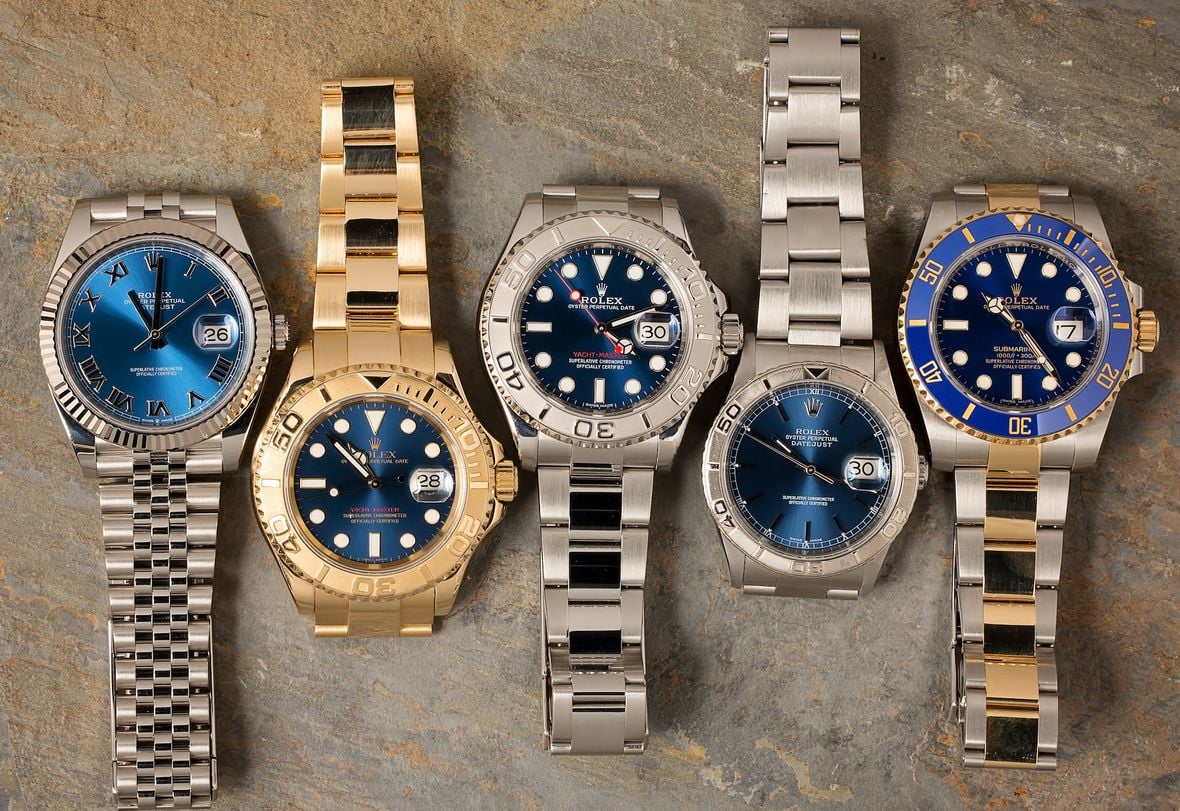Was there ever a better time in history to be a watchmaker than the 1950s? More specifically, a watchmaker in Switzerland. With the country’s neutrality in the recently concluded WWII, their timepiece industry was just about the only one still operating, the factories and production lines of every other nation having been appropriated for the war effort.
It meant they had the global market pretty much to themselves at the end of hostilities, and it was something they took full advantage of. On top of that, the 50s signaled a massive economic boom, particularly in America, with a generation which had grown up during the Great Depression and then been subjected to rationing suddenly set free with money to buy luxury watches for the first time.
So the stage was set for what would become horology’s first true golden age, and many of the names we look on today as iconic legends began their journey here. Below, we pick out some of the most important.
Rolex Explorer ref. 6610
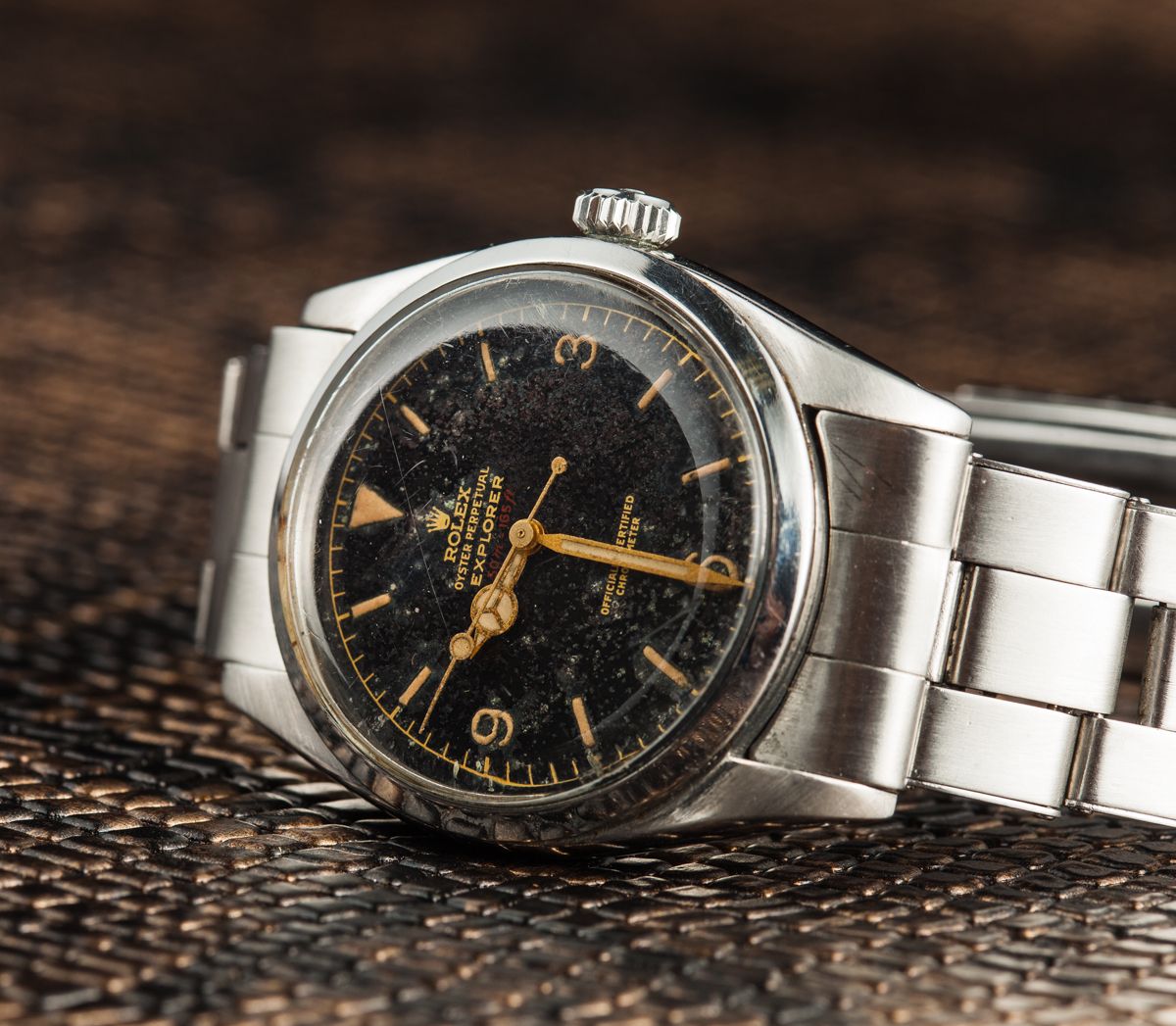
Key Features:
– 36mm Case
– Stainless Steel Construction
– Black Dial. Gilt
– 3/6/9 Indexes
– Chronometer-Certified Cal. 1030
Click here to learn the difference between Rolex Explorer and Explorer II.
Few manufactures enjoyed the 1950s more than Rolex. While the Datejust from the previous decade had put the company firmly on the map, Rolex had not yet reached the lofty heights at which it sit nowadays. In many places, Omega was still the preferred brand among many.
However, the 50s was to also give rise to something entirely new; the tool watch concept. Now, rather than merely telling the time, a model could have specific features added to aid wearers in their various jobs or activities. Rolex was at the forefront of this novel genre and it did more than anything else to secure its now unassailable reputation.
Top of the World
The watch that arguably started it all appeared in 1953 with the Explorer – and its origins can be found atop the highest peak on earth. Rolex had been sponsoring attempts on Everest since 1933, both to gain technical data on how watches coped with the harshest environments imaginable and also, as you would expect, for the unbeatable marketing opportunities.
By the time of Sir John Hunt’s expedition in ’53 – the one during which Hillary and Norgay famously first reached the summit – Rolex had backed a total of nine efforts. When the pair reached the summit on 29th May, they were wearing the company’s Oyster Perpetual watches, ref. 6092 and ref. 6298, early Bubbleback models now referred to as ‘Pre-Explorers’ among collectors. Dutifully returning the watches upon their descent, they became the prototypes for Rolex’s all-new creation that was released a few months later.
The Explorer Arrives
The first Explorer watches, the ref. 6150 and ref. 6350, were launched simultaneously, still with Bubbleback cases to house the rudimentary A296 automatic movement, but with a dial layout that was to become a calling card. The black dial and 3/6/9 numerals are now synonymous with the Explorer name, as well as giving the whole thing a wonderfully balanced aesthetic.
In 1959, the next iteration arrived with the ref. 6610, boasting Rolex’s first completely in-house built movement, the Cal. 1030, allowing for a return to flatter, more slender case backs. Although it was itself replaced in 1963 with the ultra-long running ref. 1016, the ref. 6610 was the reference that really cemented the form the Explorer would keep for many years, with the looks not changing significantly or growing beyond the 36mm dimensions until 2010.
In all, the model born at the top of the world is the one which has perhaps changed the least over the generations, even from a brand which sticks to its designs as religiously as Rolex. A stark, austere beauty, the Rolex Explorer is a pioneer in the tool watch field.
Rolex Submariner ref. 5512
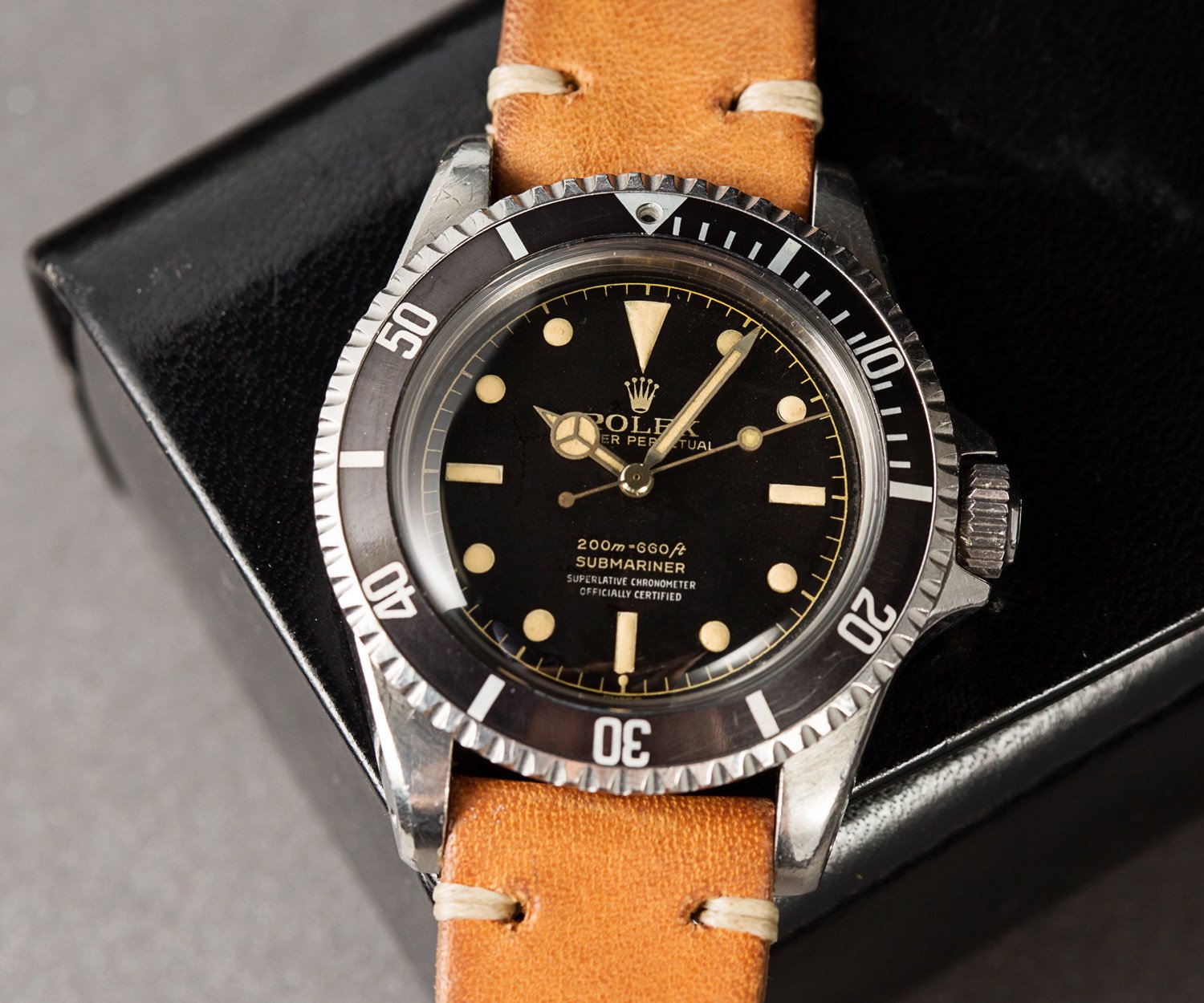
Key Features:
– 40mm Case
– Stainless Steel Construction
– Black Dial. Gilt; Matte
– Cal. 1530; Cal. 1560; Cal. 1570
– 200m Water Resistance
Click here to learn more about the very first Rolex Submariner.
Any discussion of watches stemming from the 1950s has to mention the Submariner, possibly the most famous dive model ever made. Like the Explorer, it too was originally created in 1953, although it wouldn’t debut in front of the public until the following year’s Basel Fair. While it wasn’t the first example of what we would now consider a modern dive watch, having lost out to the Blancpain Fifty Fathoms by a matter of months, it was the first to be waterproof to 100m.
An instant hit on its release (and early versions were considered good enough for both James Bond and his real-life employers, the British Ministry of Defense for whom it became a standard Navy issue) Rolex was far from finished tinkering with the design. By the end of the decade the Sub was into its ninth reference, with several having overlapping production runs and others lasting for less than a year and being built in minute quantities.
- 6200
- 6204
- 6205
- 6536
- 6536/1
- 6538
- 5508
- 5510
The brand continued to mercilessly test, evaluate, and evolve its revolutionary dive model, making continuous upgrades, both major and minor. This continued until 1959, when the Rolex Submariner reference 5512 emerged.
The Classic Submariner Profile
The net result of all that hard work and relentless examination, it was the ref. 5512 that set the look of the Submariner for the next half-century. Its case had grown to 40mm, the Twinlock crown gave a water resistance of 200m, and the bezel was made to overhang the case slightly, as well as being given a serrated edge to make turning it easier (as recommended by the MOD). Additionally, crown guards were included for the first time, protecting the notoriously weakest point of any watch design.
Those guards also went through changes of their own. The initial run of 100 or so models off the line were square in shape, but they blocked the crown so much it made winding or setting the time difficult. (Interestingly, it is believed that the cases the brand had already made with square guards were shipped across to sister company Tudor for use on its own Submariner, the ref. 7928). Rolex’s Submariner guards were then given a more pointed shape, before developing into the softly rounded type we are most familiar with today.
The Movements
As for the movement, the Cal. 1530 was used initially but soon after was replaced by the Cal. 1560 and later Cal. 1570. Both the subsequent movements were COSC-rated, and those ref. 5512 watches received an additional 2-lines of text on their dials (known as 4-liners). Crucially the early Cal. 1530 examples were not chronometer-rated, and thus did not feature the additional chronometer-certification text (known as 2-liners). Significantly more rare than their later-era counterparts, they remain the holy grail of many ref. 5512 collectors.
The ref. 5512 ran all the way up to approximately 1978, and it is considered (along with its close sibling, the always non-chronometer ref. 5513) to be the last of the pure Submariners. The crystal stayed acrylic and, even more importantly, there was no date function or Cyclops lens to spoil the symmetry. Still a hugely desired vintage classic, the ref. 5512 marks the Rolex Submariner coming of age.
Rolex GMT-Master ref. 6542
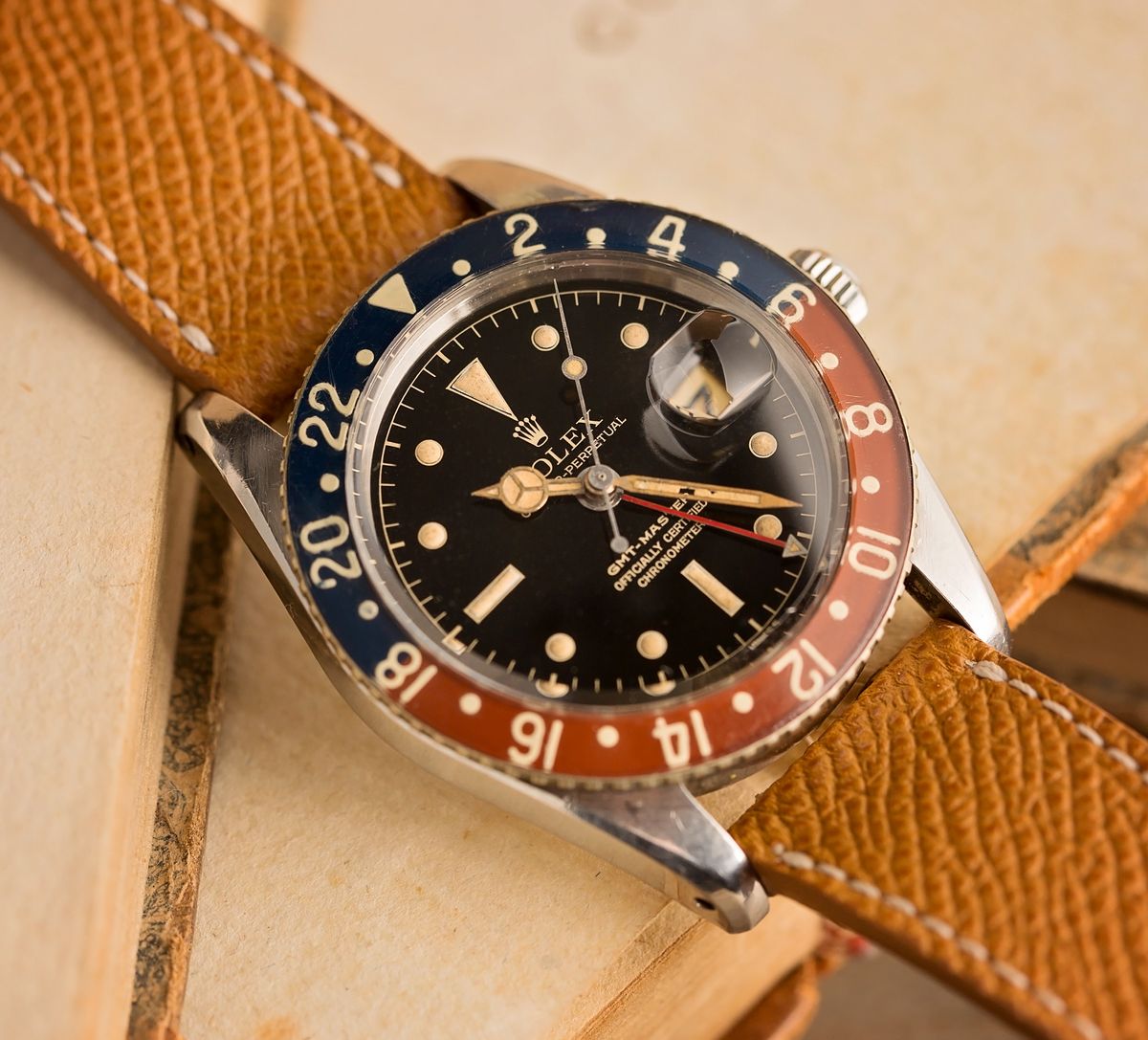
Key Features:
– 38mm Case
– Stainless Steel Construction
– Black Dial. Gilt
– Cal. 1036; Cal. 1065; Cal. 1066
– Rotating 24-hour Bezel. Bakelite Insert
– 24-Hour GMT Hand
Click here for the ultimate buying guide on the Rolex GMT-Master.
The 1950s also saw the dawning of the Jet Age, with technology founded during the war and used in unmanned rockets and early, fledgling fighter planes finding its way onto commercial airliners of the first time. One of the earliest carriers to take delivery of this new high-speed transport was Pan American Airways.
A New Age Brings New Challenges
Pan Am was among the first companies to start offering long haul flights, aboard the recently-introduced Boeing 707, and it introduced a problem no one had experienced before. Crossing several time zones at high speeds gave rise to the issue of jet-lag. Realizing its debilitating impact could have severe repercussions for their crews, the airline commissioned extensive research into the condition. The findings concluded that having some way for pilots to be aware of both their ‘home’ time as well as that in their eventual destination went a long way to overcoming some of the effects.
From there, it was a small step into contracting a watchmaker to come up with a model that could display two time zones simultaneously. Rene P. Jeanneret, a director at Rolex at the time, worked with a Pan Am team headed up by legendary navigator Captain Frederick Libby to find a solution, and the GMT-Master ref. 6542 was it.
The First Pepsi
Like all the best inventions, the strength of the watch lay in its simplicity. Rolex used its Cal. 1030 caliber as the basis for the mechanics, adding a GMT hand and another driving wheel, geared to run at half the speed of the standard hour hand, as well as a date display. It was renamed the Cal. 1036 in the process. Then, borrowing the rotating bezel concept from the previous year’s ref. 6202 Turn-O-Graph model, Rolex swapped the 60-minute gradations for an engraved 24-hour scale.
The extra hour hand revolved around the dial once a day rather than twice, and the wearer could simply rotate the bezel to correspond with the hours of time difference, with the hand pointing to the correct second timezone on the bezel. To further help with quick readability, the top half of the bezel between 18 and 6 was colored blue, while the bottom half (between 6 and 18) was painted red.
While the GMT-Master, like the Submariner, reinforced the image that Rolex could do no wrong during the 50s, it did have one drawback which soon became apparent. The bi-color surround insert, which gave the watch its ‘Pepsi’ nickname, was made from Bakelite, the first synthetically produced plastic. On the GMT, it proved to be especially brittle and prone to cracking, and its embedded, glowing radium numerals posed a health hazard due to their radiation levels. Consequently, it was replaced after only a few years into its production with a non-glowing aluminum insert. This makes the vintage examples of the ref. 6542 with their original Bakelite inserts still intact incredibly valuable.
The reference continued on until 1959, going through three caliber changes (the Cal. 1036, Cal. 1065, and Cal. 1066) as well as finding a starring role in one of the greatest of all James Bond films, Goldfinger. The favored wrist attire of a certain sultry adversary, it is commonly referred to as the “Pussy Galore” within vintage collecting circles. The Rolex GMT-Master has been the dual time zone luxury watch against which all others are judged for more than 60-years now, and the first of the breed is rightly considered an icon.
Omega Speedmaster ref. CK2998
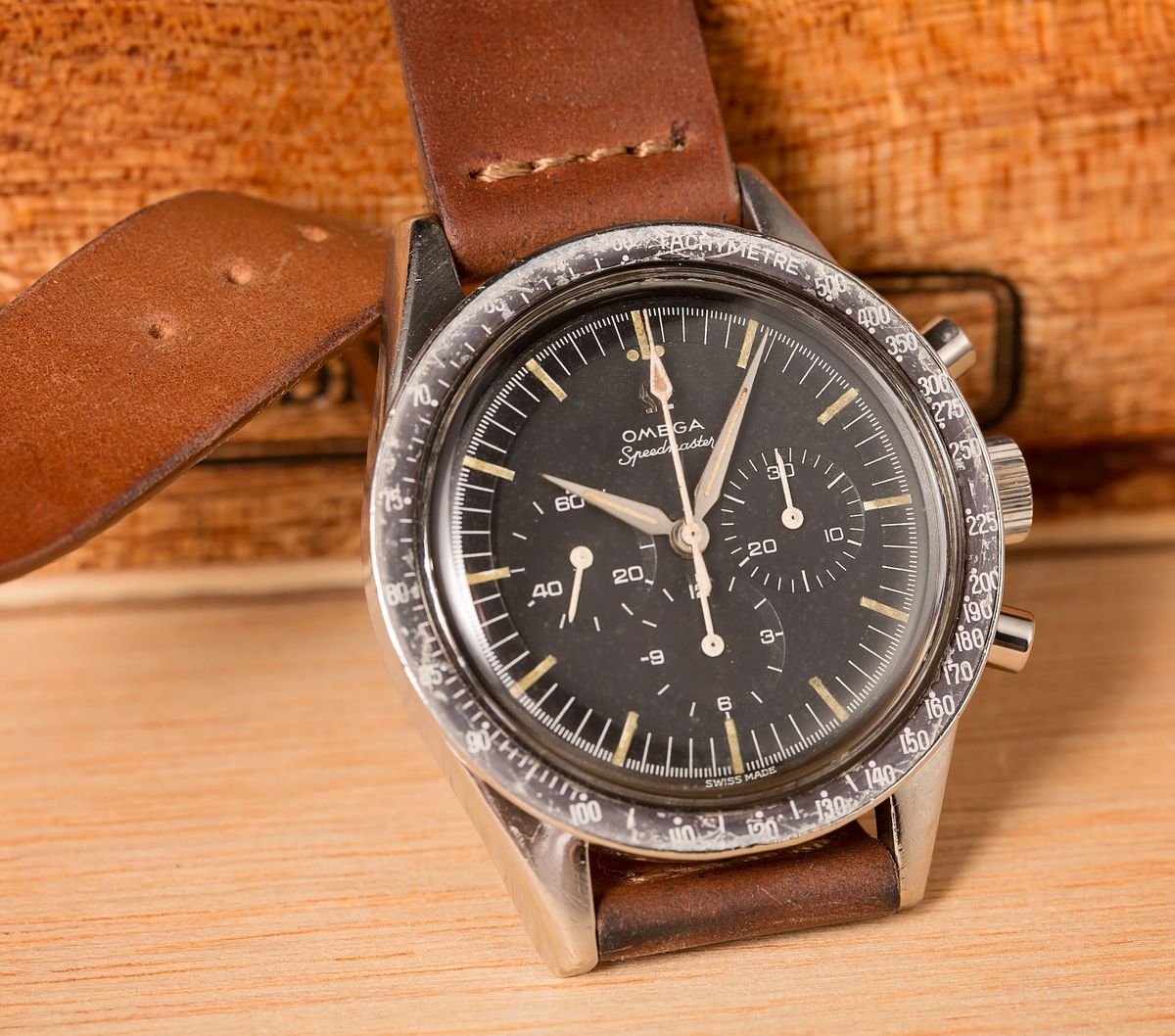
Key Features:
– 40mm Case
– Stainless Steel Construction
– Black Dial
– Triple Sub Counters
– Caliber 321
– Black Tachymeter Bezel
Click here for the ultimate buying guide on the Omega Speedmaster.
As Rolex’s closest rival, Omega also created some magnificent watches during the 1950s, and the venerable Speedmaster is perhaps the most well-loved. The original arrived in 1957, one of three new releases which together made up Omega’s Professional Collection. Alongside the Seamaster 300 (dive watch), and the Railmaster (antimagnetic watch), the Speedmaster was possibly the most innovative.
Born for the race track, it was the first chronograph wristwatch to move the tachymeter scale to the external bezel to free up space on the dial, and it was also the first to include a 12-hour totalizer, with the model being aimed at the world of endurance racing. The debut reference, the CK 2915, is obviously a celebrity in collector circles but the follow-up, the CK2998 issued just two years later in 1959, has an equally significant part to play in the Speedmaster legacy.
Setting the Blueprint
Inside, this second generation mirrored the first, powered by the now-fabled Caliber 321, a column wheel-controlled, manual winding chronograph movement developed with one-time Omega subsidiary Lemania. While it was initially introduced in the 1940s, the caliber was still considered the best of its type in the world when the Speedy started using it.
Even on the outside, the changes were only relatively minor. O-rings were fitted around the chronograph pushers to help with water resistance, and the watch grew a single millimeter, increasing to 40mm – solely a result of the new black aluminum bezel insert that replaced the tachymeter scale engraved directly into the steel on the CK 2915. This change helped legibility a great deal, as well as giving a more distinctive look overall.
Elsewhere, things more or less stayed the same, with the exception of the handset. The earlier Broad Arrows were switched out for Alpha style hands, with either a straight baton or lollipop sweep hand. The rest of the dial was carried over; the trio of sub counters were identical, stepped and finished with a circular pattern, while the main indexes were finished with plenty of lume.
All in all, the Speedmaster was just about the most capable and well admired mechanical stopwatch money could buy at the time, as Rolex would discover a few years later when it went into battle against the Speedmaster with the Daytona, and lost spectacularly. However, the best was yet to come for Omega.
The Speedmaster Boldly Goes
The references of the Speedmaster built between 1957 and 1969 are collectively known as the ‘pre-moons’ among collectors.
- CK 2915
- CK 2998
- 105.002
- 105.003
- 145.003
The next in line, the ref. 105.012 is the one which actually experienced the lunar surface on Buzz Aldrin’s wrist. From then on, we have the Moonwatch. However, it was the CK 2998 which was the first to explore outer space in 1962, when astronaut Wally Schirra wore his own, privately-purchased model during the Mercury-Atlas 8 mission, a nine-hour voyage which orbited the Earth six times.
So it can claim much of the credit for turning heads at NASA when they began their search for an official flight-qualified watch in 1964, putting the Speedmaster name on the road to becoming inseparable from the Space Race. In 2012, Omega celebrated the 50th anniversary of that historic feat, releasing the Speedmaster FOIS (First Omega in Space). An almost carbon copy of the original (with the exception of a few modern enhancements), it proved a big hit on its arrival, evidence of the timelessness of the Speedmaster’s design. A vital chapter in just about the most impressive heritage of any watch, the CK 2998 is a must-have.
Breitling Navitimer ref. 806
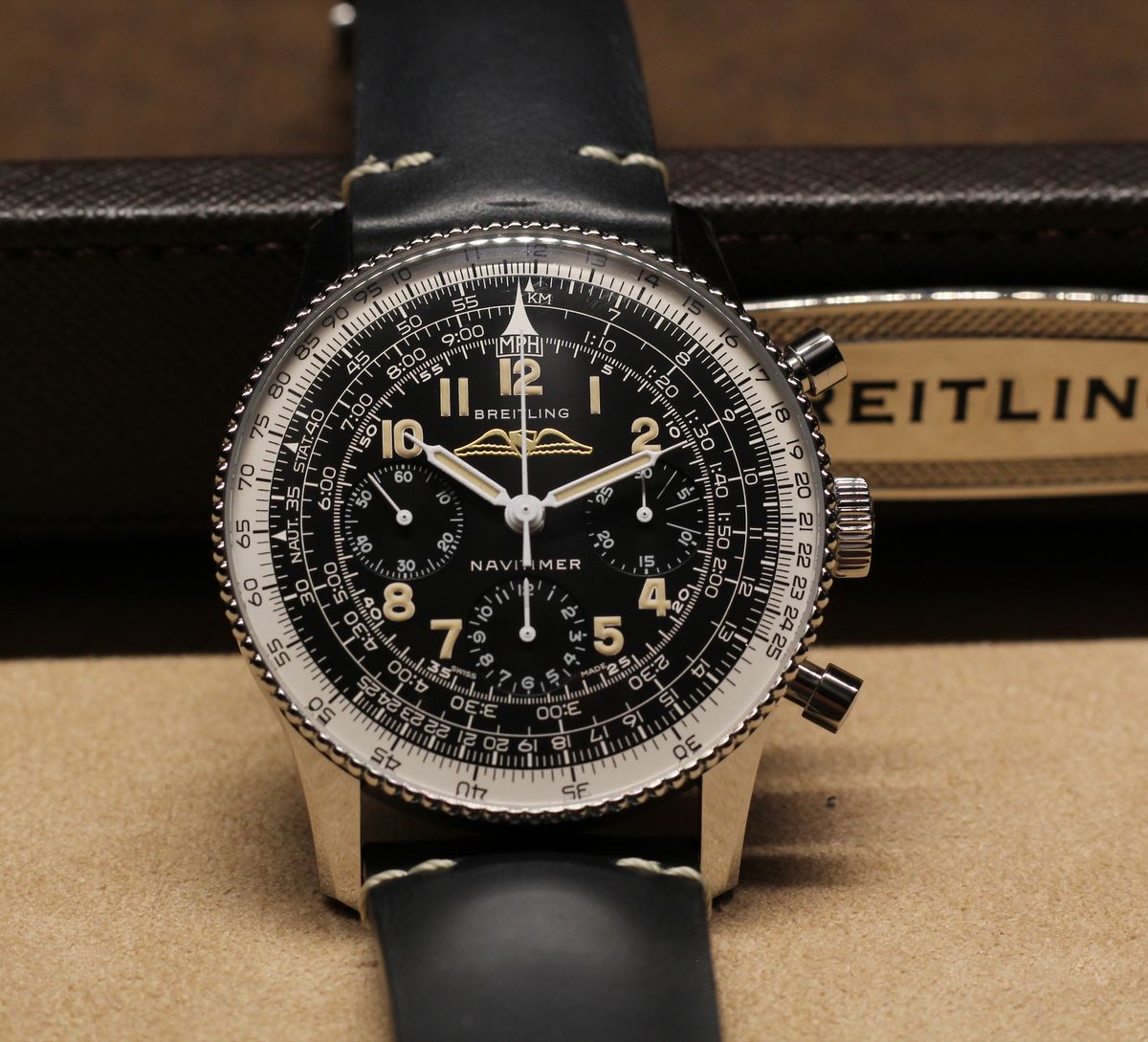
Key Features:
– 41mm Case
– Stainless Steel Construction
– All Black Dial
– Integrated Slide Rule
– Beaded Bezel
– Venus 178/Valjoux 72 movements
– Triple Register Chronograph
Click here for the ultimate buying guide on the Breitling Navitimer.
Founded in 1884, Breitling spent the first few decades of the 20th century developing and improving the mechanical stopwatch. It was Breitling that first made a watch with one independent pusher to start, stop and reset the chronograph and then, 10-years later, brought out models with two buttons; the top to start and pause timings, the bottom to reset; even further increasing accuracy.
As well as that, Breitling has had a relationship with the world of aviation for many years, and the brand previously supplied onboard instruments to dozens of commercial airlines and military air forces from as early as the 1930s. So it stands to reason that Breitling would eventually come up with a world-beating chronograph watch designed specifically for professional pilots.
Calculations On The Fly
The early life of the Navitimer is shrouded in more mystery than you might think for something that happened not especially long ago. No one seems able to agree even on which year the watch debuted, with some experts claiming it was 1954 and others saying 1952. Breitling themselves suggest it was the latter, but as many of their official records appear to have been lost or destroyed, it is still somewhat of an unknown.
What is certain is that the original reference was the ref. 806, a natural successor to the Chronomat from the 1940s. That had been the first watch to include a slide rule on its bezel and had been aimed at scientists and engineers. A ‘CHRONOgraph’ for ‘MAThematicians.’ The Navitimer, its name a portmanteau of ‘navigation’ and ‘timer’ was an even more involved creation explicitly for aviators, and took the term tool watch to literal new heights.
It was launched at a time when cockpit instrumentation even aboard the most advanced airliners was still fairly basic when compared to the modern day. The Navitimer, designed by Breitling with the help of AOPA (The Aircraft Owners and Pilots Association) and mathematician Marcel Robert, could be used for a bewildering array of different logarithmic calculations, including average air speed, ground speed, fuel burn, rates of climb or descent, and elapsed time.
To do so, the watch had three scales; the uppermost on the bezel, and another around the perimeter of the dial. Below that lay the tachymeter, shown in kilometers. The top scale on the rotating surround could be adjusted in either direction to make calculations against the bottom scale, allowing for easy and quick (once you knew how) multiplications and divisions. The scales themselves displayed the three most crucial units for a pilot; STAT for standard mileage, NAUT for nautical miles and KM for kilometers.
The Looks & Movements
It wasn’t until you had fought past all that confusion of numbers that you got to the watch itself, the actual time-telling part confined to a relatively small area in the middle, the space reduced even further by the sub dials at the 3, 6 and 9 o’clock. Yet, despite all the information having to fight for real estate on the Navitimer’s face, the model managed to pull off the trick of remaining fairly legible. It is, obviously, a busy looking watch, but considering the sheer amount of data available at the fingertips, it is an impressive feat.
The first models had all black dials, including sub counters, with the outermost scale in white. Post-1965, Breitling gave the next generation of the Navitimer – the ref. 809, known as the Cosmonaute – white sub-dials to give a reverse panda setup. The power was provided by one of two movements. The very earliest pieces contained the Venus 178, a manually-winding, column-wheel mechanism. That was joined soon after by the Valjoux 72, as would go on to drive the first Daytona. Both remain extremely collectible vintage models and the contemporary Navitimer range as a whole is as popular today as it has ever been. Without doubt, one of the most distinctive and noticeable watches of recent years.
Rolex Day-Date ref. 1803
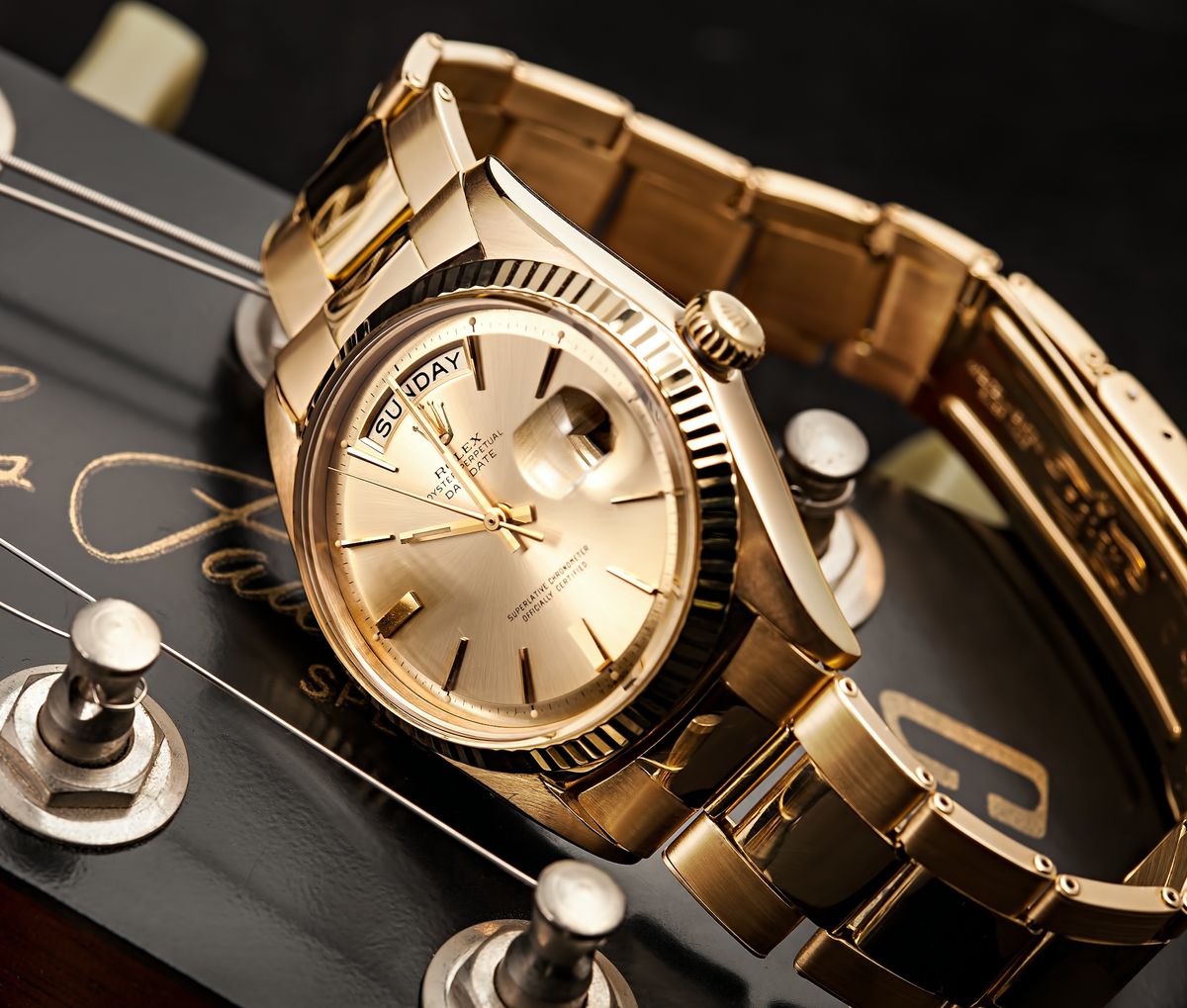
Key Features:
– 36mm Case
– Gold or Platinum Construction
– Fluted Bezel
– Cal. 1555; Cal. 1556
– Acrylic Crystal
– Day in 11 Languages
Click here for the ultimate buying guide on the Rolex Day-Date.
While its burgeoning tool watch collection was getting most of the attention during the 50s, Rolex still freed up space right at the top of its lineup for a new flagship. That position had been held by the Datejust since its release in 1945, the first waterproof, automatically winding wristwatch with a date display. A little over a decade later, the original Day-Date landed, taking everything the Datejust could do and adding to it, cramming in a second calendar function and making it the only watch at the time to have the day of the week spelled out in full.
To further cement its seniority, Rolex decided the Day-Date would only be crafted from the finest of precious metals; 18k gold (in all three flavors) as well as the most exclusive of them all, platinum. It, seemingly like everything else the brand attempted during the era, was an immediate success and the Day-Date attracted the attention of so many of the elite it eventually won the completely non-ironic nickname of the President.
The Day-Date Hits its Stride
However, as was par for the course with new Rolex models in the 50s, the start of the Day-Date’s life was relatively turbulent. In just three years it was into its third generation as upgrades and alterations (mainly internal) were made, before all the pieces fell into place in 1959 with the ref. 18xx series.
This was the range which would set the standard for nearly 20-years, not being superseded again until 1977. It too was the one to introduce the enormous variety of dial colors, making the Day-Date almost as chameleonic as the Datejust, and allowing for it to have an almost limitless appeal across the entire spectrum of buyers. Basically, whether you wanted your watch to be subtle and understated, a bold statement piece or anywhere in-between, there was a Rolex Day-Date designed especially for you.
It could also be had with a choice of bezel. On the ref. 1806, for example, the surround had a textured pattern known as a Morellis finish. The ref. 1802 had a smooth bezel while the ref. 1807 (both released a little later in 1963) had an unusual tree bark surface. But by far the most popular of the entire ref. 18xx family was the ref. 1803, with its archetypal fluted bezel.
Featuring a uniform series of soft ridges, the fluted surround evolved out of the older coin-edge type, a style which had a practical purpose in that it gave watchmakers a way to grip the bezel as they screwed it down onto the middle case. The case-backs also generally had a coin edge for the same reason. On the Rolex Day-Date, the fluted bezel gave just the right amount of refined grandness; something which caught the eye, but not in an overly imposing way.
The Movements
As you would expect, considering the rate of development at Rolex during the time, the ref. 1803 went through a couple of caliber changes. It arrived powered by the Cal. 1555, a fine movement working away at 18,000vph and benefitting from a free sprung Nivarox hairspring and Microstella regulation. That was replaced in 1967 by the Cal. 1556, ostensibly identical but with an upped frequency of 19,800vph. The increase granted an improvement in timekeeping accuracy and also a certain amount of inherent shock protection.
In 1972, Rolex added a hacking function, so that pulling out the crown now stopped the seconds hand, making it easier to precisely set the time. The only thing missing was the convenience of a Quickset feature, so changing the day or date could not be done independently of the main hands, but the President would have to wait for subsequent generations before that became available.
The President ref. 1803 Today
A brand new Day-Date is still one of Rolex’s most expensive models, with even the entry-level version costing in excess of $30,000. Surprisingly though, a great example of the ref. 1803 can be had for less than $7,000 on the pre-owned market.
The first choice watch of dozens of heads of state, chairmen of the board and all manner of high powered leaders, always in the finest precious metals, can be bought for about the same price as the cheapest steel Submariner. And chances are, because of the nature of the traditional Day-Date wearer, it will have been well looked after and regularly serviced. Still the ultimate in aspirational wrist wear, the President ref. 1803 may be vintage Rolex’s biggest bargain.
